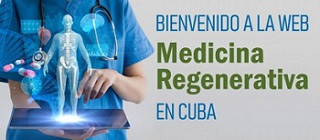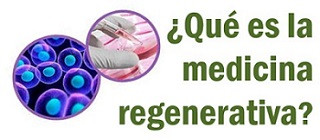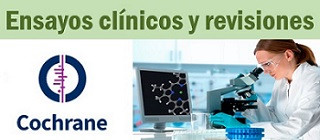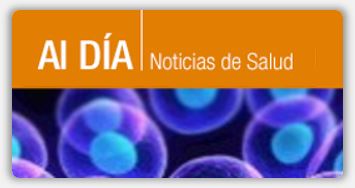Abstract
Owing to the several advantages that they have over other cells, mesenchymal stem cells are among the most promising tools in stem cell therapy after ischemic stroke. Mesenchymal stem cells can be obtained from various sources. Therefore, a wide range of careful comparative studies of these cells is required, from the preclinical stage (in vitro and in vivo) to the clinical stage, in order to develop the best therapy with the most appropriate cell type. An in vivo study in this issue of Stem Cell Research & Therapy compares the therapeutic potential of two cell types, obtained from bone marrow and adipose tissue, in a rodent stroke model. This commentary discusses the significance of comparative studies of mesenchymal stem cells, including the related article in translational research.
Evaluation of the Delivery of Mesenchymal Stem Cells into the Root Canal Space of Necrotic Immature Teeth after Clinical Regenerative Endodontic Procedure
Tyler W. Lovelace, DDS,* Michael A. Henry, DDS, PhD,* Kenneth M. Hargreaves, DDS, PhD,*†
and Anibal Diogenes, DDS, MS, PhD*
Abstract
Introduction: Immature teeth with open apices treated
with conventional nonsurgical root canal treatment
often have a poor prognosis as a result of the increased risk of fracture and susceptibility to recontamination.
Regenerative endodontics represents a new treatment
modality that focuses on reestablishment of pulp vitality and continued root development. This clinical procedure relies on the intracanal delivery of a blood clot (scaffold), growth factors (possibly from platelets and dentin), and stem cells. However, to date, the clinical presence of stem cells in the canal space after this procedure has not been demonstrated. The purpose of this clinical study was to evaluate whether regenerative endodontic procedures are able to deliver stem cells into the canal space of immature teeth in young patients and to identify the possible tissue origin for these cells.
Methods:
After informed consent, the first appointment onsisted
of NaOCl irrigation and treatment with a triple antibiotic
paste. One month later, the root canal space was irrigated with sterile saline, and bleeding was evoked
with collection of samples on paper points. Real-time
reverse-transcription polymerase chain reaction and
immunocytochemistry were conducted to compare the
gene transcripts and proteins found in the root canal
sample with levels found in the systemic circulation.
Results: Molecular analyses of blood collected from
the canal system indicated the significant accumulation of transcripts for the stem cell markers CD73 and CD105 (up to 600-fold), compared with levels found in the systemic blood. Furthermore, this effect was selective because there was no change in expression of the differentiation markers ALK-P, DSPP, ZBTB16, and CD14.
Histologic analyses demonstrated that the delivered cells expressed both CD105 and STRO-1,markers for a subpopulation of mesenchymal stem cells.
Conclusions: Collectively,these findings demonstrate that the evokedbleeding step in regenerative procedures triggers the significant accumulation of undifferentiated stem cells into the canal space where these cells might contribute to the regeneration of pulpal tissues seen after antibiotic paste
therapy of the immature tooth with pulpal necrosis.
(J Endod 2011;37:133–138)
1Center for Allogeneic Stem Cell Transplantation, Karolinska Institutet and Karolinska University Hospital, Huddinge, Stockholm, Sweden
2Division of Clinical Immunology and Transfusion Medicine, Karolinska Institutet and Karolinska University Hospital, Huddinge, Stockholm, Sweden
3Hematology Center, Karolinska Institutet and Karolinska University Hospital, Huddinge, Stockholm, Sweden
Correspondence: O Ringdén, E-mail: Olle.Ringden@ki.se
MSCs have attracted great interest in regenerative medicine because they can differentiate into several tissues of mesenchymal origin, such as bone, cartilage, tendon and cardiomyocytes.1 Infused MSCs improve the outcome of acute renal, neural and lung injury, possibly by promoting a shift from production of proinflammatory cytokines to antiinflammatory cytokines at the site of injury.2, 3 MSCs also have immunomodulatory effects and they reduce alloreactive T-cell responses and mitogenic responses in vitro.4, 5, 6 We investigated the use of MSCs for immunomodulation in patients with acute GVHD of the gastrointestinal tract, liver and skin, and were able to demonstrate MSC donor DNA in the target organ.7 Subsequently, MSCs were also used for tissue toxicity such as hemorrhagic cystitis, pneumomediastinum and perforated colon.8 Responses were seen in half of the patients, although many subsequently died from infection. MSCs reduced alloreactivity in MLCs in vitro equally effectively, irrespective of whether they were autologous or HLA mismatched.5 This has also been confirmed in vivo, in which responses in GVHD were the same regardless of whether the MSCs were HLA identical, HLA haploidentical or HLA mismatched.
Here, we report a patient with myelofibrosis who was treated with MSCs for severe hemorrhage. This 61-year-old male underwent allogeneic hematopoietic SCT from an HLA-A, -B and -DRb1 genomically identical unrelated donor. He received conditioning with fludarabine (30 mg/m2) for 6 consecutive days, followed by BU (4 mg/kg/day) for 2 consecutive days and antithymocyte globulin (5.5 mg/kg). He received a BM graft containing 1.8 × 108 nucleated cells per kg and 1.8 × 106 CD34+ cells per kg. He received CYA and ‘short’ MTX as immunosuppressive treatment. His total WBC count fell below 0.1 × 109 cells per L on day +11. Except for an increase in bilirubin on day +4, thought to be due to hepatotoxicity, his post transplant course was uneventful. On day +12, he started to bleed from the nose and gastrointestinal tract. During the next 5 days, he received in total 17 U of erythrocytes, 7 U of fresh frozen plasma and 12 U of platelets, and had a constant platelet level below 5 × 109 cells per L. Hb level was maintained between 73 and 97 g/L. On day +16, he was also given a G-CSF-mobilized granulocyte transfusion without any increment in neutrophil count. He had constant melena and an abdominal computed tomography scan revealed diffuse hemorrhaging from the proximal jejunum. Owing to previous portal and mesenteric thrombosis, he had undergone surgery, receiving a mesenteric caval shunt in the year 2000 and developing several varicose mesenteric veins. On this occasion, surgery to stop the bleeding was not possible for technical reasons and the platelet levels were <5 × 109 cells per L. He had multispecific anti-HLA antibodies and was refractory to platelets. Because of life-threatening hemorrhage and no other treatment option, MSCs at 2 × 106 cells per kg (pooled from two donors) were given on day +18.
Subsequent to the MSC infusion, the patient had no further hemorrhages and a nose pack was removed. MSCs were taken from the BM and cultured in 10% FCS according to our expansion protocol.5 We decided to use pooled MSCs from two donors, because previous experience using single donors had shown that there was a response rate of ~50%.7, 8 We had found that in vitro immunomodulation in MLCs improved if MSCs from several donors were pooled.9 The patient had his last melena 2 days after MSC infusion, and thereafter, stool was normal and fecal hemoglobulin was negative (Table 1). He was discharged from hospital on day 33 after transplantation. Subsequently, he developed graft failure. He has been readmitted to the transplantation ward on four occasions because of hemorrhage (Table 1). He has been given HLA-matched platelets, erythrocyte units, plasma and on two occasions 1 × 106 pooled MSCs per kg with encouraging effect. Owing to graft failure and rejection, he received a retransplant from a new HLA-identical unrelated donor. During the post transplant course filled with complications, he was given HLA-identical platelet transfusions. He spent 4 months in the transplant ward. He is now at home, alive and well, 8 months after retransplantation with a Hb of 119 g/L, a WBC of 3.8 × 109 cells per L, a neutrophil count of 2.7 × 109 cells per L and a platelet count of 108 × 109 cells per L. CD3, CD19 and CD33 cells are all of donor origin.
Table 1 – Transfusion requirements, Hb (g/L) and hemorrhages on specific days after first transplantation.Full table
This case report suggests that MSCs can be used for severe hemorrhaging that does not respond to conventional therapy. The antiinflammatory and tissue repairing effects by MSCs are probably not the only explanation in this case, because the positive effects of MSCs on bleeding were quite rapid. One could speculate that MSCs may also induce vasoconstriction and coagulation. We wanted to alert our colleagues to this therapeutic possibility. To prove the efficacy of this approach, a control study is needed, which will require a major multicenter effort.
In addition, we have now treated 12 patients for severe hemorrhagic cystitis. Seven of these patients have been reported previously.8 Two patients had reduced transfusion requirements after MSC infusion, but died of multiorgan failure. In 8 of the 10 remaining patients, gross hematuria disappeared after a median of 3 (1–14) days. Two patients did not respond to MSC infusion. The two most recent responders received pooled MSCs.
MSCs had a dramatic effect on tissue toxicity in some patients. In other patients, there was no obvious effect. Further studies are required to answer the question of why some patients respond to MSC therapy while others do not. MSC donor DNA has been detected in target tissues of patients with GVHD and at the site of injury of tissue toxicity.7, 8 This is also in accordance with experience in experimental animals, in which MSCs were demonstrated to home into damaged tissue.10
We have tried for the first time to pool MSCs from several donors. Additional studies are needed in order to determine whether this can improve the response rate in patients with tissue toxicity and GVHD.
To conclude, treatment with MSCs is a therapeutic option in patients with severe hemorrhage and merits further investigation.
Top of pageConflict of interest
The authors declare no conflict of interest.
Top of pageReferences
Caplan AI, Bruder SP. Mesenchymal stem cells: building blocks for molecular medicine in the 21st century. Trends Mol Med 2001; 7: 259–264. | Article | PubMed | ISI | ChemPort |
Ortiz LA, Gambelli F, McBride C, Gaupp D, Baddoo M, Kaminski N et al. Mesenchymal stem cell engraftment in lung is enhanced in response to bleomycin exposure and ameliorates its fibrotic effects. Proc Natl Acad Sci USA 2003; 100: 8407–8411. | Article | PubMed | ChemPort |
Zappia E, Casazza S, Pedemonte E, Benvenuto F, Bonanni I, Gerdoni E et al. Mesenchymal stem cells ameliorate experimental autoimmune encephalomyelitis inducing T-cell anergy. Blood 2005; 106: 1755–1761. | Article | PubMed | ISI | ChemPort |
Bartholomew A, Sturgeon C, Siatskas M, Ferrer K, McIntosh K, Patil S et al. Mesenchymal stem cells suppress lymphocyte proliferation in vitro and prolong skin graft survival in vivo. Exp Hematol 2002; 30: 42–48. | Article | PubMed | ISI |
Le Blanc K, Tammik L, Sundberg B, Haynesworth S, Ringden O. Mesenchymal stem cells inhibit and stimulate mixed lymphocyte cultures and mitogenic responses independently of the major histocompatibility complex. Scand J Immunol 2003; 57: 11–20. | Article | PubMed | ISI | ChemPort |
Tse WT, Pendleton JD, Beyer WM, Egalka MC, Guinan EC. Suppression of allogeneic T-cell proliferation by human marrow stromal cells: implications in transplantation. Transplantation 2003; 75: 389–397. | Article | PubMed | ISI | ChemPort |
Ringden O, Uzunel M, Rasmusson I, Remberger M, Sundberg B, Lonnies H et al. Mesenchymal stem cells for treatment of therapy-resistant graft-versus-host disease. Transplantation 2006; 81: 1390–1397. | Article | PubMed | ISI |
Ringden O, Uzunel M, Sundberg B, Lonnies L, Nava S, Gustafsson J et al. Tissue repair using allogeneic mesenchymal stem cells for hemorrhagic cystitis, pneumomediastinum and perforated colon. Leukemia 2007; 21: 2271–2276. | Article | PubMed | ISI | ChemPort |
Samuelsson H, Ringden O, Lonnies H, Le Blanc K. Optimizing in vitro conditions for immunomodulation and expansion of mesenchymal stromal cells. Cytotherapy 2009; 11: 129–136. | Article | PubMed | ISI | ChemPort |
Chapel A, Bertho JM, Bensidhoum M, Fouillard L, Young RG, Frick J et al. Mesenchymal stem cells home to injured tissues when co-infused with hematopoietic cells to treat a radiation-induced multi-organ failure syndrome. J Gene Med 2003; 5: 1028–1038. | Article | PubMed | ISI |



